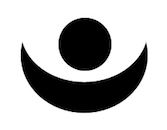Often referred to as the ‘Yoga of Awareness’ or ‘Holistic Yoga’, Kundalini yoga is a practice fusing several ancient practices and principles to enable the practitioner to manage and manipulate the energetic flow in the body. Kundalini includes the practices of Bhakti yoga (devotion and mantra chanting) Raja yoga (meditation, mental and physical control) and Shakti yoga (the expression and control of energy or power).
A kundalini yoga class can leave you feeling like you’ve been to therapy, done a workout and felt the earth move – vibrationally speaking. Kundalini is a modality by which practitioners can deeply cleanse the nervous system, tune into their inner potential and release energetic blockages or imbalances to find a peaceful life and a balanced outlook. This isn’t just yoga to make the body feel better – this is yoga that can create shifts in every area of your life.

Historically speaking…
The exact date and emergence of kundalini tantra is unclear, but the practices of kundalini energy manipulation and philosophy are mentioned in the Upanishads (vedic yoga texts) dating back to 1000 BC. The term Kundalini means a spiritual energy or life force located at the base of the spine and often represented by a coiled snake. Practicing Kundalini yoga awakens the kundalini shakti (energy of universal creation) and allows it to rise up through the chakra system along the spine to the crown of the head. Each chakra is a wheel or hub of energy at a particular point in the spine where energy channels intersect. Through practicing asana (physical postures), pranayama (yogic breathing techniques) and mantra it is possible to direct the flow of energy through the chakras to have profound effect on the nervous system, the mind and the flow of life. If you’ve ever felt like a passenger in your own life, kundalini may be what you’re searching for.
The practice of kundlini yoga historically was part of tantric tradition. Tantra means secret mantra and as such, the practice was the preserve of the very few privileged gurus and selected students. The modern presentation of Kundalini yoga that we often see today is a blend of several traditions brought to the mainstream by Yogi Bhajan in the 1960’s. Practice involves the use of Kriyas – yoga ‘sets’ of asana, pranayama, meditation and the use of yogic muscle locks or bandhas to direct energy flow and prepare the nervous system, mind and body for the flow of kundalini awakening and rising through the chakra system.
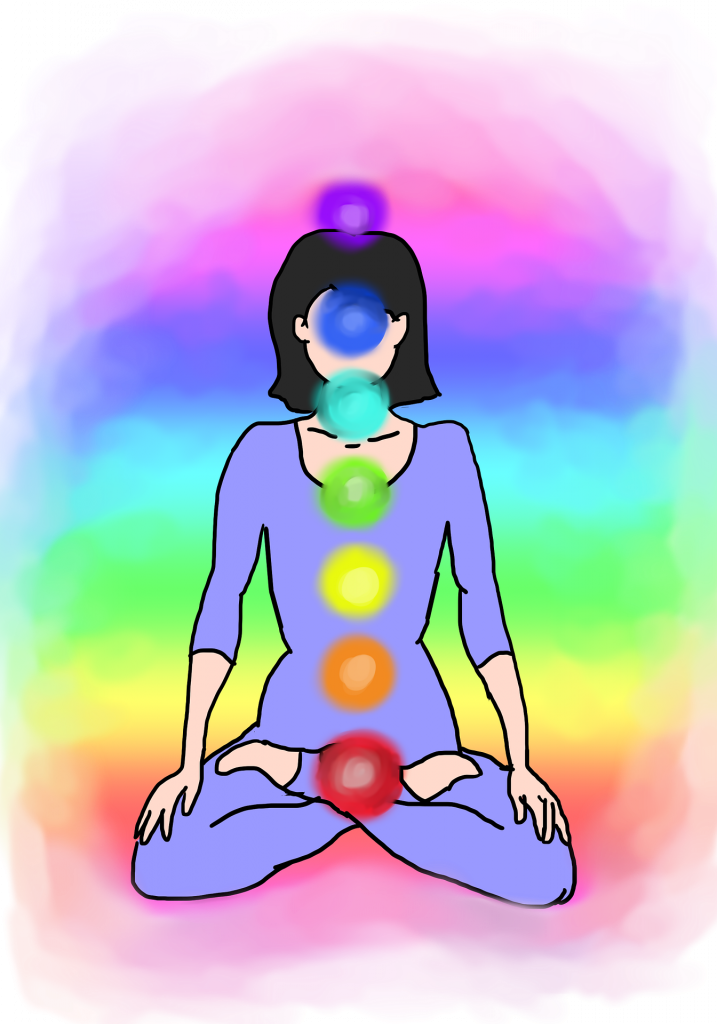
On wearing white
Traditionally teachers and students in kundalini class wear outfits of all white. The choice of white as the universal colour of practice is that colours have an effect on consciousness. Many holistic traditions refer to colours as being inseparably connected to energy points in the body. The chakra system is strongly identified with colours at points from the base of the spine to the crown. The Aura of each individual presents as colours depending on energy flow and interaction.
White is the colour that represents all 7 colours of the chakra system. By wearing white, we project the auric body further away from our physical form, making the energetic changes of our kundalini practice more profound. Wearing white contributes to the efficiency, profundity and progressive effect of our practice. Having said that…your practice is personal to you. If you feel more comfortable or you feel you have a deeper connection to another colour, you can wear whatever assists your practice.
Bowing to the truth within you
Each Kundalini session (following modern principles of Yogi Bhajan) starts with the process of tuning in. We do this by rubbing the palms together, pressing the hands together at the centre of the chest and engaging in the powerful mantra Ong Namo Guru Dev Namo three times. This is your recognition of the universal truth within; bowing to your own destiny.
What to expect
Kundalini yoga is weird – there I’ve said it. Now that’s out of the way, let’s look at what a typical class will involve. After tuning in, we start the Kriya – a set of postures (some of which may be familiar to you if you’ve practiced other forms of yoga), breathing techniques, muscle locks and mantra chanting (silently or out loud). Kundalini isn’t as dynamic as a vinyasa class – you won’t be getting up and down from your mat over and over – but it is still challenging. We use rapid repetition and controlled movements to channel energy. You will feel this as heat, emotional release, fatigue or muscle shakes (along with many other possible effects). It’s a full body, mind and spirit experience in each session. Classes will close with mantra, meditation or sound experiences.
Join me on Wednesday evenings twice a month to embark on the extraordinary journey that is kundalini yoga. Awaken your divine energy in 2021 and make this year the year you reclaim happiness.
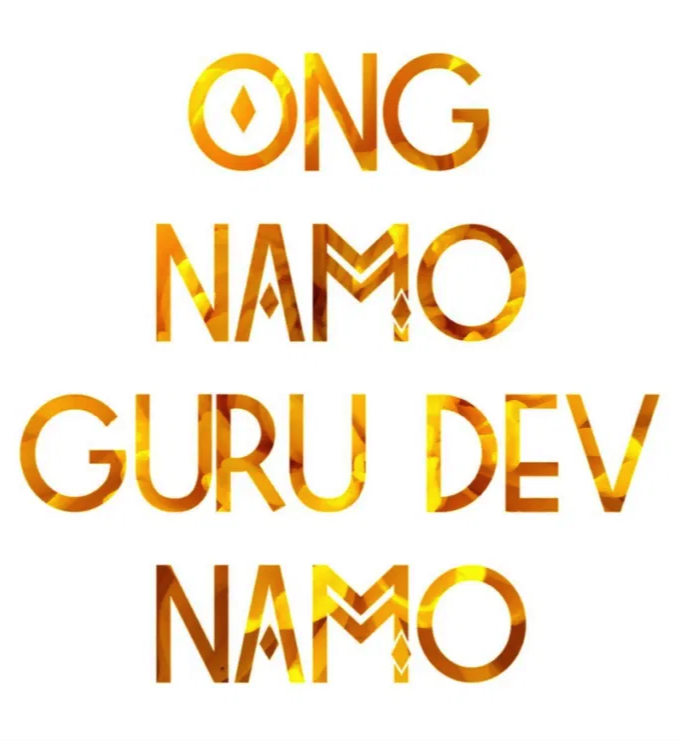
Yoga Masterclass with Yogi Ashokananda
One of the great joys of yoga is that no two teachers are the same. It’s so exciting to experience new flows, styles of teaching and types of yoga to keep the love of yoga alive.
This was the first time I’d managed to book my first choice workshop at the Om Yoga Show (show review can be found here). The session was 90 minutes long for the bargain price of £10. I expected the room to be an uncomfortable, overcrowded affair, but I was pleasantly surprised. Mats were well-spaced and there was enough room to spread out without getting too close to your neighbour (it’s just not very British to touch a stranger – especially a sweaty one).
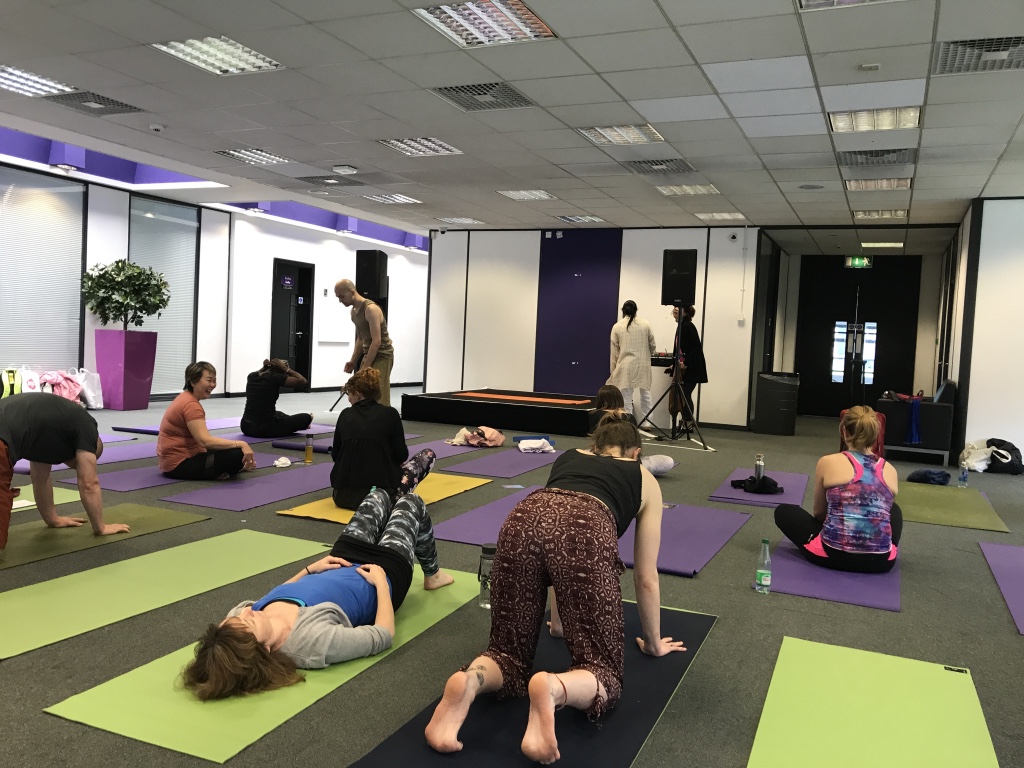
The workshop was billed as a Himalayan Hatha Yoga series with energy to create freedom and lightness in the body. There were intense sun salutations with upward dog kept on the toes rather than the tops of the feet. Looking around, I could tell that everyone found this a change from their ‘norm’. There were people of all abilities in the class which is always great to see and be part of.
We were put through our paces using fast flows, arm balances, strength postures and some of the most intensive Kriya and pranayama I have ever experienced. The breath holds and transitions worked to cleanse the body, generate heat and still the mind. It was very tough! We worked through standing postures testing balance and strength. We added in fast arm movements to challenge concentration and work alongside pranayama. There were opportunities to try transitions from headstand to side crow and back and chair to flying pigeon to name a few. There were also challenging bound postures which I enjoy but really test the limits of patience and surrender. This was a full body and mind workout. We sweated…a lot.
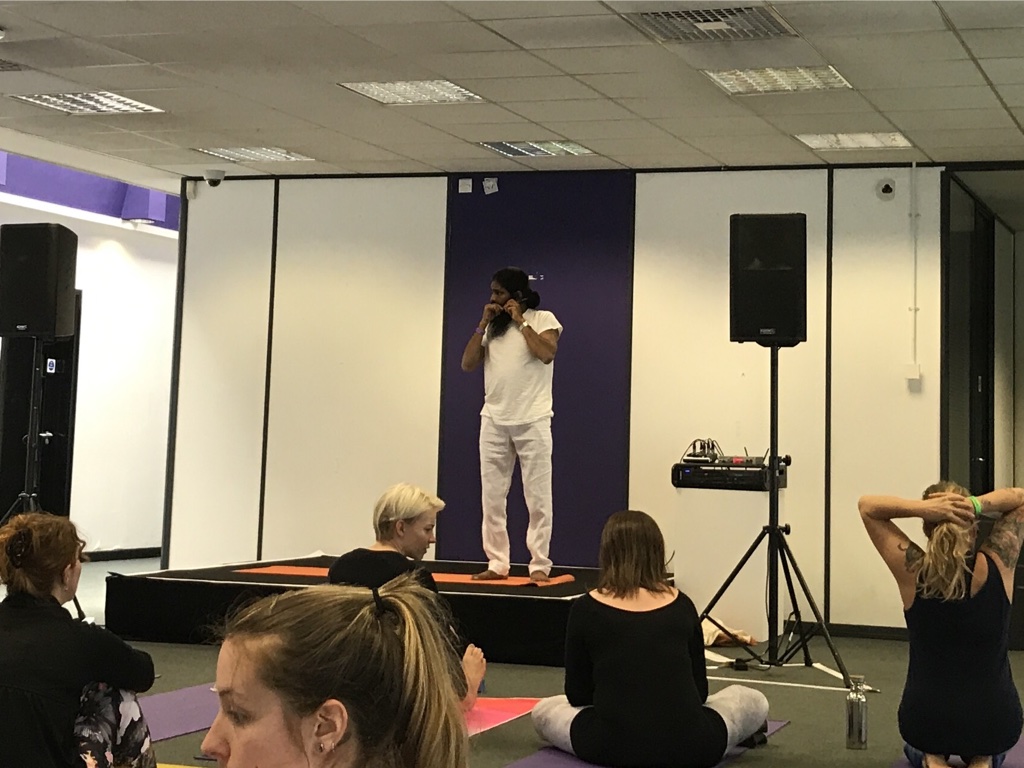
Yogi Ashokananda was encouraging and warm. Although he moved through transitions quickly he was clear in his instruction – although firm when he spotted we were flagging. He added in asanas and movements I haven’t tried or heard of before (wagtail or cheetah pose anyone?) but they were intense. I really enjoy this physical form of yoga because pushing the limits of the body helps to control the mind. I really found this a transformational session and have since used some of Yogi Ashokananda’s practices in my classes, particularly how to move within postures rather than just the traditional holds. I also really enjoyed using pranayama and kriyas as an integrated practice while doing asanas rather than sitting down and doing them separately.
The only let down for me was the poor quality of yoga mats that were provided. They were slippy to the point of being dangerous in a class such as this where sweat was an inevitability. Holding downward dog was a feat of concentration and resolve. I recommend taking your own mat to the Om Yoga Show if you intend to do a workshop.
We finished with some chanting aloud (again not very British) which everyone engaged with (surprisingly). I’m not familiar with the verse we chanted but many were so it was great to be a part of it. I always enjoy some Om chanting at the end of a class though, it just really fills me with happiness.
Yogi Ashokananda prepared us well for the class by saying “corpse pose is called corpse pose for a reason. You shouldn’t do it unless you feel like you’re going to die. Five straight hours of yoga will make you feel like you’re going to die…you only get to do savasana then”. He stuck to his word…there was no savasana after the most intense 90 minutes of yoga I’ve ever done. But, he was right. I didn’t need it and I didn’t miss it.
Namaste
